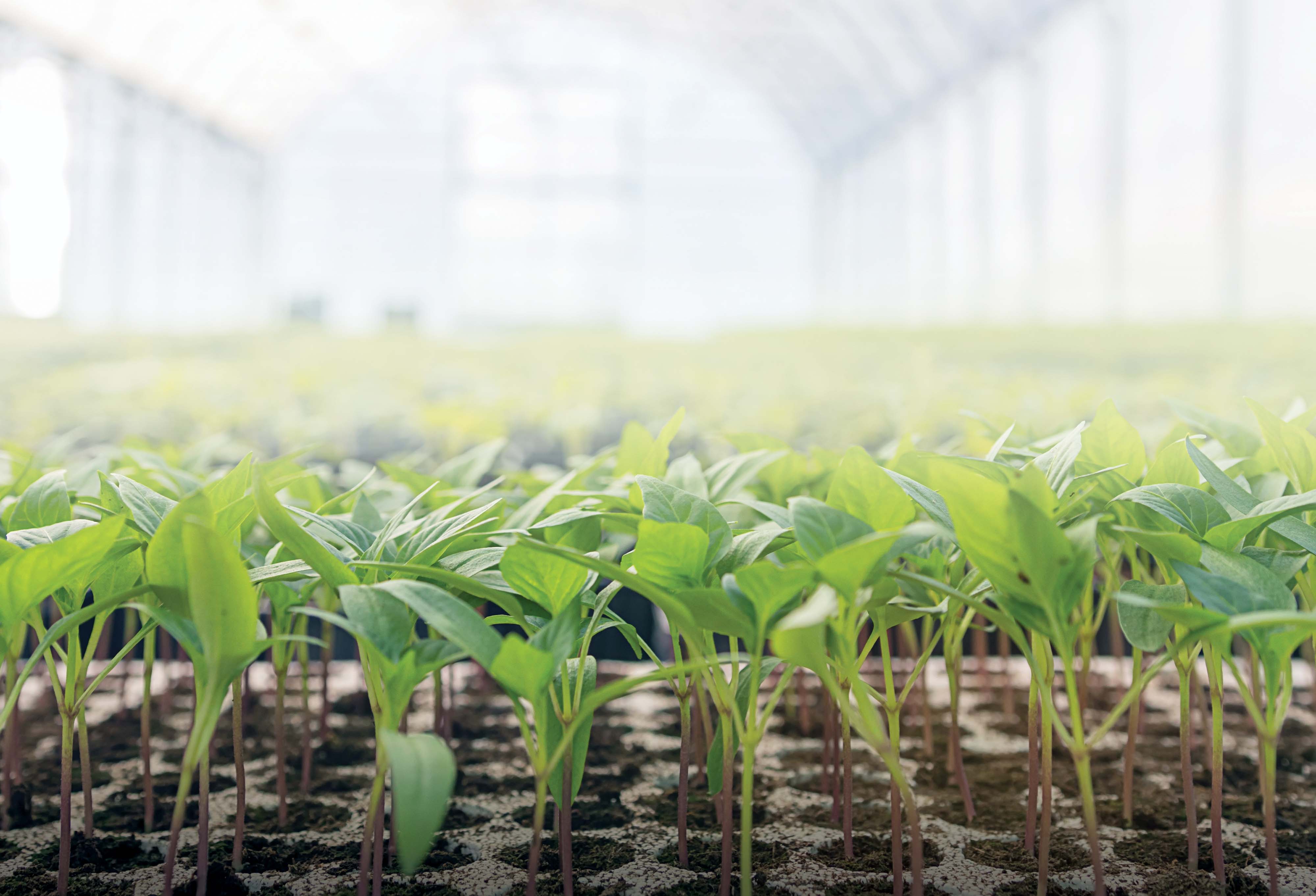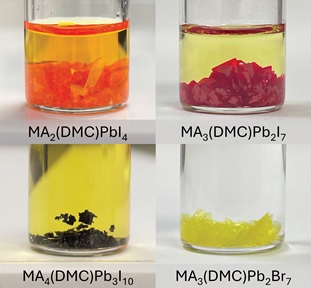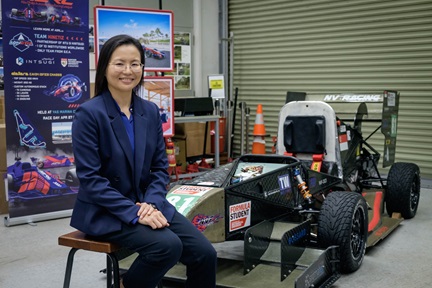Transformational synergies: Bringing ideas to life, together
Through partnerships, NTU helps industries accelerate research translation.

Pests are the bane of the horticulture, landscape and agriculture sector, destroying about 20 to 40% of global production yearly. One effective way to tackle this problem is by detecting pest infestations early.
To this end, a laboratory set up by NTU, Singtel – led by its digital and technology services unit, NCS – and the National Research Foundation Singapore presents an innovative solution.
Leveraging machine learning, researchers at the Singtel Cognitive and Artificial Intelligence Lab for Enterprises (SCALE@NTU) devised a sensor using radio waves called millimetre waves (mmWave) to detect insect pests on plants without the need for manual inspection. This transforms the labour-intensive process of pest detection into something automated, data-driven and non-invasive.
The innovation has piqued the interest of a branch in Singapore’s lead agency for greenery and biodiversity conservation, the National Parks Board (NParks). The agency’s Plant Science and Health branch is working with the lab to refine the prototype and test it in the field.
“NParks’ Plant Science and Health branch is keen to explore this advanced technology for pest detection. The utilisation of mmWave radar technology presents a significant commercial opportunity in horticulture and agriculture, offering a sustainable solution for pest management,” says Prof Cong Gao, Co-Director at SCALE@NTU.
SCALE@NTU is an example of a successful academia-industry tie-up based at NTU. Collaborations like this help research breakthroughs find the light of day in real-world applications, while companies and governments tap into the University’s vast resources for their innovation needs.
To date, NTU has over 250 industry partners. SCALE@NTU is one of about 20 corporate and joint labs involving major companies and the University, set up right on the campus where the action is.
Such cooperation stands to benefit both industry and academia, according to Prof Lam Khin Yong, NTU’s Vice President (Industry). Prof Lam heads the University’s Vice President (Industry) Office (VPIO), which was formed to accelerate bench-to-industry applications.
“Building strong strategic partnerships with key industry players will not only contribute to innovation and the commercialisation of basic research, but also enrich the academic and industrial experience for our students and researchers,” says Prof Lam.
Offering multiple models for different parties to cooperate, NTU aims to enable its public agency and industry partners to hit the ground running when innovating alongside researchers. How these models work depend on the needs of the industry, and can run the gamut from one-to-one unions and tripartite-level corporate labs to multi-party tie-ups, large consortiums and flagship programmes involving overseas organisations.
For instance, SCALE@NTU is a corporate lab established to help drive Singapore’s digitalisation strategy in becoming a smart nation. Its various research projects, from enhanced search-and-rescue localisation technology to intelligent transportation systems, are anchored on cutting-edge artificial intelligence to address key issues across sectors.
“Synergising the domain expertise of NCS with NTU’s research strengths, we’ve achieved remarkable outcomes, including training 280 researchers and students, filing 82 technology disclosures and completing 16 technology transfers,” says Prof Ong Yew Soon, Co-Director at SCALE@NTU. “Our fruitful collaboration exemplifies an effective public-private partnership.”
SCALE@NTU’s latest research in pest detection is spearheaded by Dr Muhammad Faeyz Karim and Assoc Prof Arokiaswami Alphones of NTU’s School of Electrical and Electronic Engineering.
The potential benefits it presents are manifold – the solution can improve plant quality and crop yield, contribute to the urban greening of Singapore and the nation’s “30 by 30” goal of being self-reliant in food production, and address labour shortage in the horticulture and agriculture sector.
Says Dr Karim, who is preparing the technology for commercial use: “Its real-time nature could provide early warnings of pest outbreaks, allowing farmers to take timely action and reduce losses.”
A BOON FOR THE INDUSTRY
Industry players like infrastructure consultancy Surbana Jurong have found working together with NTU on research valuable. For example, to address the need for clean energy, the Surbana Jurong-NTU Corporate Lab developed a cryo-polygeneration project.
The project involves converting liquefied natural gas (LNG) back to gas, a process that releases “cold energy”. The gas can then be used for applications like generating electricity, while the cold energy is not wasted but instead harnessed for various industry cooling needs, including refrigeration and deep freezing.
This alliance pairs NTU’s worldclass research capabilities with Surbana Jurong’s global industry experience in the urban and infrastructure sectors to develop solutions for complex urban and industrial challenges.
“As global temperatures continue to rise, the tropical hot weather that we face in Singapore will only get worse.
Leveraging the circular economy concept, our lab saw the potential of repurposing waste cold energy to provide clean and efficient cooling to residential districts and for industrial applications,” explains Prof Alessandro Romagnoli, Co-Director of the Surbana Jurong-NTU Corporate Lab.
With cryo-polygeneration, the researchers seek to use the waste cold energy generated during LNG regasification as a cooling mechanism and to capture carbon – trapping harmful greenhouse gases emitted during industrial processes, such as in industrial parks.
According to Mr Tan Wooi Leong, Surbana Jurong’s Senior Executive Director, Energy, producing cold energy for carbon capture is expensive, so the cryo-polygeneration project presents a sustainable alternative that optimises waste cold energy.
Mr Tan is confident of the project’s commercial viability. “The design, plant process and all other packages of the project are completed. We are already looking at implementing it across our other projects worldwide. The knowledge that we’ve gathered through the corporate lab has allowed us to navigate these overseas projects quite easily,” he says.
Another example of the synergy between NTU and the industry in accelerating research translation is the joint work between battery maker Durapower and the University’s Energy Research Institute @ NTU (ERI@N), both of which share similar goals towards developing innovative energy solutions.
“We believe in value creation. Our partnership with NTU is an extension of our company’s readiness to adopt new technology through ongoing market engagement, and research and development,” says Mr Kelvin Lim, Durapower’s CEO. “NTU offers research expertise, while we provide industry-focused insights, mass production capabilities and global sales channels.”
According to Prof Madhavi Srinivasan, Executive Director of ERI@N, both parties have complementary expertise and interest in advancing sustainable battery research.
There has been good progress since the start of the tie-up. The team has created a novel solution that utilises digital twin and cloud technologies to offer accurate, real-time condition monitoring of lithium ion batteries for up to five years. This patent-pending innovation developed by ERI@N Cluster Director Asst Prof Hung Dinh Nguyen is expected to extend the lifespan of batteries by over 50% and, in turn, significantly reduce carbon emissions. It is currently being tested at NTU’s Smart Campus.
“The humid, high temperatures of tropical Singapore pose unique challenges to battery performance, so testing and understanding the operational state of batteries at the individual component and system levels is important,” explains Prof Madhavi.
BUILDING A COMMUNITY
As industry problems become more complex and involve more stakeholders, NTU is pivoting to multi-party collaborations that leverage the expertise and strengths of each party from academia and industry. One example is its ongoing research in liquid organic hydrogen carriers – compounds used for storing and transporting hydrogen as renewable energy. This is a joint effort with the National University of Singapore and several companies across Singapore and Japan.
VPIO’s Prof Lam says: “We foresee such collaborative models will become the norm as industries become increasingly interconnected and global challenges require more interdisciplinary solutions.”
The article appeared first in NTU's research & innovation magazine Pushing Frontiers (issue #23, March 2024).




.tmb-listing.jpg?Culture=en&sfvrsn=29c7e020_1)
.tmb-listing.jpg?Culture=en&sfvrsn=55153609_1)

